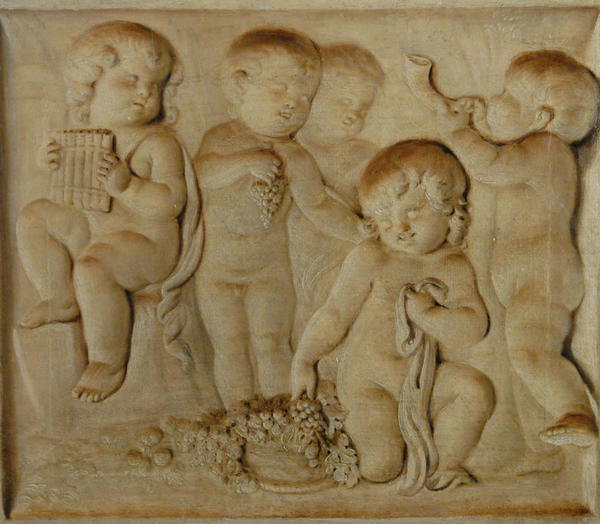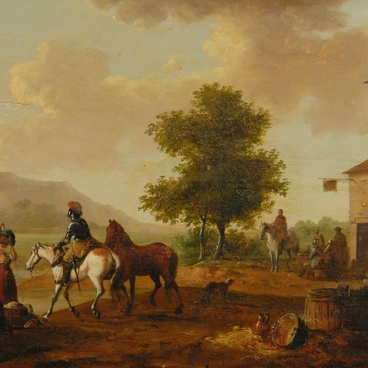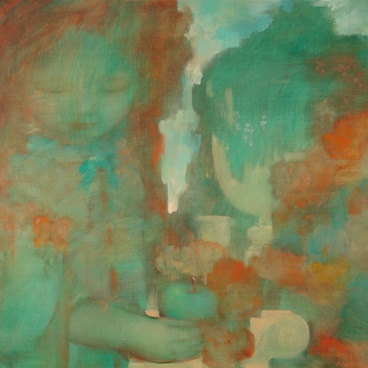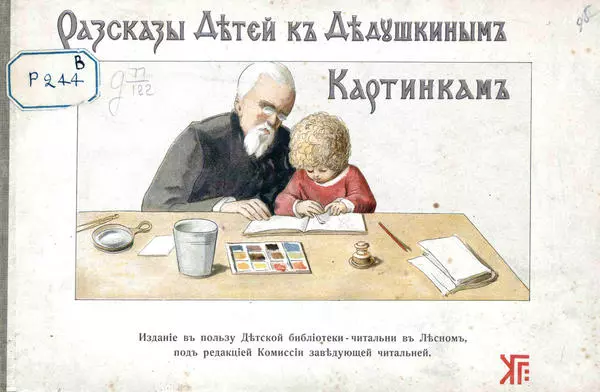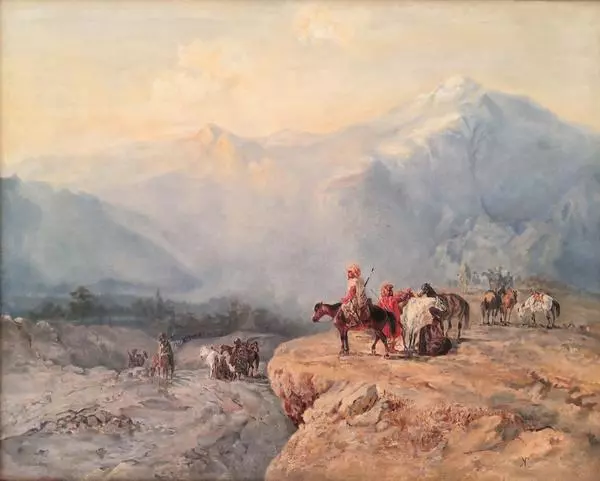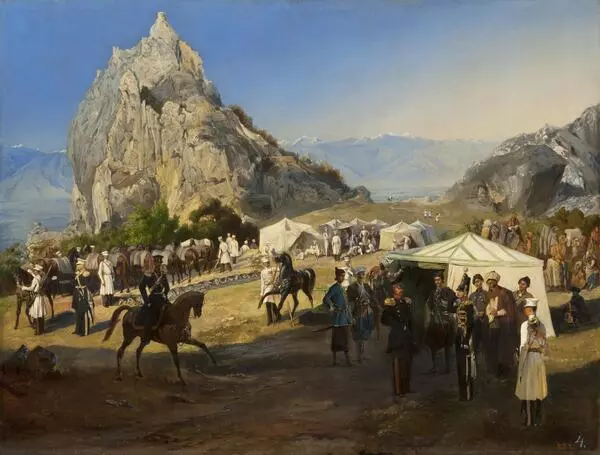Prince Grigory Grigorievich Gagarin (1810–1893) showed interest in painting from childhood, the house of his diplomat father in Rome was the center of the artistic life of the Russian diaspora. There the boy created scenery for a home theater with Karl Bryullov, and went to sketches with him. Continuing his father’s career, he also did not part with his passion for drawing. He created illustrations for the poems of A.S. Pushkin and the works of M. Lermontov. He studied in depth Byzantine church architecture after a trip to Athens and Constantinople. During his service in the Caucasus, he was engaged in the restoration and development of cultural heritage – the frescoes in the Zion Cathedral and a project for the construction of a theater in Tbilisi. In 1857 he created albums “Picturesque Caucasus” and “Costumes of the Caucasus”, that reflected his keen interest in the life and art of the peoples of the Caucasus. As the vice president of the Academy of Arts, he carried out a series of organizational reforms, renovated of the building, and organized paid exhibitions in order to provide income for student benefits.
Grisaille “The Children” from the Tarusa Art Gallery collection is marked by the influence of the artist’s stay in Rome. The plot of playing children, the putti, has its origins in ancient Greek and Roman art. The winged eroth babies symbolized the deities of love and Christian souls. Their images were usually used to fill the empty spaces of sarcophagi and sculpted tombstones, and were also embodied in mosaics. Subsequently, the image was adapted by the art of the Renaissance, already without wings, and the eroths were called ‘putti’.
Grisaille is a type of painting that is performed in gradations of one tone, usually gray, black or brown. Often, grisailles reproduced sculptural reliefs, imitating them exactly. The composition ‘The Children’ belongs to this type. The artist managed to masterfully reproduce the high relief: using light and shade tint, he recreates a believable image of volumetric elements. The shade of gray-brown exactly reproduces the color of marble. In Russian art, plots with frolicking putti were often used, starting with classicism, in architecture to decorate the facades and interiors of estates.
Grisaille “The Children” from the Tarusa Art Gallery collection is marked by the influence of the artist’s stay in Rome. The plot of playing children, the putti, has its origins in ancient Greek and Roman art. The winged eroth babies symbolized the deities of love and Christian souls. Their images were usually used to fill the empty spaces of sarcophagi and sculpted tombstones, and were also embodied in mosaics. Subsequently, the image was adapted by the art of the Renaissance, already without wings, and the eroths were called ‘putti’.
Grisaille is a type of painting that is performed in gradations of one tone, usually gray, black or brown. Often, grisailles reproduced sculptural reliefs, imitating them exactly. The composition ‘The Children’ belongs to this type. The artist managed to masterfully reproduce the high relief: using light and shade tint, he recreates a believable image of volumetric elements. The shade of gray-brown exactly reproduces the color of marble. In Russian art, plots with frolicking putti were often used, starting with classicism, in architecture to decorate the facades and interiors of estates.

